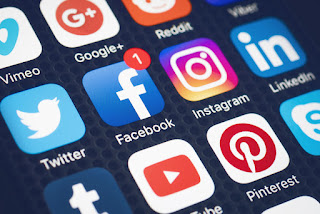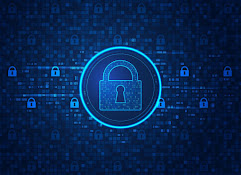This year, from late August to early October, I learned that there was a different side to all the media and social content that we all consume. Upon hearing some of the information for the first time, I was skeptical and at times doubtful that it was true, but the evidence was there to see in the research. As several uncomfortable truths were slowly uncovered, I realized that my appreciation for this Media Law and Literacy course had grown. Not only has it given me a new perspective on the internet and what could be lurking beneath it, but it's taught me a lot about people as well. Throughout this realization however I asked myself several times; why is this information important? What does it change for me? At the very least, this post will dive into to my newfound answers to these questions.

My relationship with social media has evolved quite a bit since I started using it. I recall my downloaded application being Facebook in 2014. I was a clueless twelve year old middle school boy, who wanted to do nothing but upload pictures of his favorite Transformers action figures and make stop motion short films. I was warned of the dangers very early on by my mother, who repeatedly told me that there are several programs and people on the app with nothing but bad intent. I shortly took it down because of this fear of who could be watching, but it didn't stop me from returning to the social media scene a few years later through Snapchat in 2016. When I first downloaded it, I remembered that from my experience from Facebook that there are several types of users on the app, and I noticed that there were several bots (AI faking itself as human users) attempting to friend me. I found this quite suspicious and interesting, but I did not think much of it due to how easy it was to block or remove these strange automated imposters. Little did I know that this issue would grow even larger on other apps, which I proceeded to download and use more frequently.
The previous paragraph is only serves as an outline for a point that must be made clear. It may be a bit ambitious to say this, but from my interactions with people in the past five years or so, I believe many of us have the same experiences on these applications. In other words we tend to use them to exercise our social muscles, talk to friends, and get updates about what is going on in the world for example. Because we receive all of these benefits, we tend to ignore the bad on the social platforms, no matter how severe it might be. Perhaps temporarily most have not had any consequences, but the ever present danger that exists must be made aware of. This course has opened my eyes about how data can be tracked and how information about you can be sent to people all across the world without consent. This danger allows for a plethora of crimes such as identity theft, fraud, and doxing.

One of the other evil sides of these enormous social networks comes from the people that use it as well of course. A frequent problem that many have experienced, and even myself included, is the ever present evil of cyberbullying. When I was in high school, I gained a few thousand followers through posting jokes about certain animated shows, which gained quite a lot of traction in the cartoon community on that app. While it was great to hear the opinions of several people, there were many who were in complete disagreement with some of my takes and that made them quite frustrated. So much so that they would often times insult my family, race, or even some my other followers. While it personally did not bother me much, I know how much this hatred can affect certain people. One creator in that community ended up committing suicide because of it, which sent shockwaves to everyone one surrounded by the incident. This is one of the many dangerous potentials that displays how hatred can affect people through these platforms, which is why it is important to take breaks from the apps like Instagram and Twitter, and bring more awareness to mental health on them.

I believe that one of the reasons why I enjoyed this course so much was due to the fact that it felt very real. At the age of 20, one of the most relevant things that exist in my life come from technology. Whether it be sports, communication, or even just checking the weather, it is fair to say that I rely on technology quite a lot. I think that while it's natural to be involved in such things due to the way the world is evolving, and that most peoples commitment to these technologies will only grow bigger. However, this course had conditioned me to look at the details that most may ignore, such as the terms and conditions that many tend too skip. In my family, the only one who consistently reads the terms is my father, just in case a time comes when he agrees to something that could potentially be a threat to his democracy. Due to the nature of some of the mechanisms within apps and computers, as I grow older I starting to believe that this precaution's validity is more and more relevant. My family has never quite been skeptical of technology as a whole, but the older people in my family a find it quite difficult to adapt. They prefer to stick to what they know and keep their use of modernized cell phones to a minimum, which in many ways saves them a lot of the trouble someone like me could go through.

The online footprint concept is one that I have thought about quite often in all honesty. I have had multiple social media accounts on different platforms, but only on one had I revealed my identity publicly. In the future, I would not mine if people realized that I was associated with certain accounts that I managed, because I don't have anything to be ashamed of or hide on them. That being said, it was never my intention for that to be the case. I think that the things I have posted will live on in the internet for a very long time, but that's all well and fine if the people consuming the content enjoy it.
To conclude, I would like to emphasize how much this course has raised my awareness to my comfortable technological life. I feel like I have a better understanding of the history and underlying techniques technology uses, which makes me a lot more cautious and aware of the dangers that lurk just beneath our noses.





























